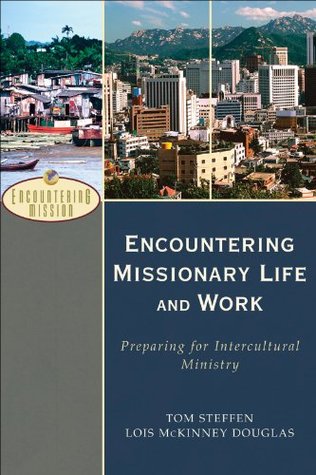Kindle Notes & Highlights
by
Tom Steffen
Read between
March 18 - May 5, 2020
All generations may be present in each, although the more anti-establishment boomers may prefer the independent avenue while those GenXers who prefer teamwork, partnerships, and networks may join a parachurch organization as a team.
Their pioneering entrepreneurial spirit allows them no time to participate in long debates to decide schedules, direction, budgets, policy, methodology, or the color of paint for the walls.
TABLE 7.1 PROS AND CONS FOR INDEPENDENTS
Some see the church as the only biblical way to send missionaries, while others understand it as one avenue among several.
Allen concludes: “In the beginning the Church was a missionary society: it added to its numbers mainly by the life and speech of its members attracting to it those who were outside”
One result of this change was the understanding that the pagans requiring missionary effort were outside the empire. The church redefined missions as a geographical issue; missions was conducted over there, not here.
SIDEBAR 7.1
The Protestant movement, begun in the early 1500s, was initially reluctant to consider that God had a global plan beyond their countries’ borders.
The Lord’s return was so imminent, claimed Luther and Melanchthon, that there was no time to conduct missions. Calvin maintained that it was God’s, not people’s, duty to reach the lost (election). Zwingli believed those “called of God” should be sent out by the church. Third, they were preoccupied with wars between Protestants and Catholics. Fourth, the newly formed Protestant governments were not really interested in reaching pagans. Fifth, Protestants lacked a monastic structure (rejected by Luther) that could make missions happen, and no alternatives (such as modern mission agencies) had
...more
It was not until the early 1900s that the evangelical churches began to reassume their rightful role as institutions responsible for world missions.
“World evangelization requires the whole church to take the whole Gospel to the whole world. The church is at the very center of God’s cosmic purpose and is the appointed means of spreading the Gospel.” A solid theology of the church (ecclesiology) definitely permeated Lausanne 1974.
“independence of the church is bad, co-operation with the church is better, service as an arm of the church is best.”
Once a missionary is accepted for support, they require that multiple reports and forms, demonstrating continual successful ministry, be filled out and returned promptly. In these reports, social issues tend not to receive the attention that spiritual issues do.
Often theology, Western in flavor, dominates their training and philosophy of ministry.
a missions elder from a megachurch told Sam Metcalf of Church Resource Ministries in Pasadena, California, why his church had decided to discontinue the ministry of a missionary: “We didn’t approve of what the missionary was doing, so we told him that he and his family had to return to the States,” the elder said. “After all, he’s supported by us 100 percent. He’s our missionary.” “But doesn’t he work for an agency?” Metcalf asked. “Aren’t they his employer and supervisor?” “Yes,” the elder replied, “but we pay the bill; the agency doesn’t.”
TABLE 7.2 PROS AND CONS FOR LOCAL CHURCHES
(1) classical mission agencies, (2) denominational agencies, and (3) faith missions.
Although they may require workers to be active in local churches and typically have workers from various denominations on their rosters, they are independent from the control of local churches and denominations.
TABLE 7.3 PROS AND CONS FOR MISSION AGENCIES
This group maintains that Pauline teams worked with local churches but reported to no one specific church; they considered themselves separate from but united with the local church; they were outside the local church, but worked alongside the local church. Ralph Winter uses the terms “modality” (stationary local churches) and “sodality” (mobile mission agencies) to distinguish the two structures.
Some of the early faith missions forbade members to ask potential supporters for financial assistance. They were told to cast God’s vision for reaching the unreached among the churches, and God’s people would respond and support it.
TABLE 7.5 PROS AND CONS FOR FAITH MISSION AGENCIES
Nothing remains static in the mission world. With the growth of liberal theology, many evangelical agencies felt their collective voice was no longer being heard.
Whether through partnerships or networks, mission leadership today has recognized the need for interdependence.


